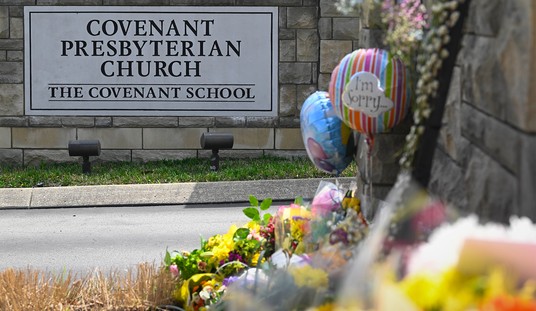It took a couple of weeks after the president’s highly publicized announcement, but the ATF has officially released the text of its proposed rule on unfinished frames and receivers in the Federal Register today, which starts the clock ticking on the implementation of the rule in 120 days .
While the entire rule is far too long to quote in its entirety, I’d encourage folks to read Stephen Gutowski’s analysis of the proposed rule at The Reload. I won’t quote Gutowski directly since his piece is behind a paywall, but one of his main concerns is that, not only do the ATF’s proposed rules attempt to broadly redefine terms like “frame”, “receiver,” and “readily convertible”, but that the agency appears to be granting itself regulatory powers that should properly be exercised by Congress.
The proposed rule is scheduled to take effect on August 24th, but I expect legal challenges to be filed long before then.
Meanwhile the Biden administration’s attempt to craft a narrative around the proposed rule continues, and the vast majority of the media coverage around the proposed rule on “ghost guns” has been exactly what you’d expect; lavish praise for “reasonable” and “commonsense” measures that press outlets claim will prevent violent criminals from building their own untraceable guns and make our streets safer.
So to say I was surprised when I ran across this story from the Pittsburgh Post-Gazette is a bit of an understatement. I was downright shocked when I saw that the focus of the piece is a former police officer who’s now running his own gunsmithing and ammunition business and isn’t afraid to call out Biden’s new rule for what it is; an assault on the Second Amendment rights of law-abiding Americans.
On a quiet street in Rochester, Beaver County, the Master-Ammo Co. operates out of a cramped garage in an unassuming white house, its machine room strewn with power tools, boxes of bullets and shotgun shells.
Under fluorescent lights sits Sam Piccinini, a gunsmith who’s dealt in weapons and ammunition for nearly a decade. On a metal shelf behind him, a dull black AR-15-style rifle rests flat on its side.
Piccinini holds up a silver-colored 80% finished receiver, the part of a firearm that contains its trigger assembly. It is the foundation of a self-assembled weapon that’s sold in kits — dubbed more recently as “ghost guns” — because the kits are not given serial numbers and are sold without background checks, making them virtually untraceable for someone looking to build one.
To this Western Pennsylvania gun merchant, a new federal crackdown that blames ghost guns for a spike in U.S. shootings is rooted in bad information about the weapons and who buys them, despite supporters of stricter gun control lauding it as a step toward curbing violence.
As Piccinini, a 30-year veteran of law enforcement in western Pennsylvania correctly points out, criminals aren’t going to be dissuaded from picking up a gun because the Biden administration has taken aim at 80% lowers sold in DIY gun-building kits.
From his field experience, Piccinini believes criminals are much more likely to purchase a weapon on the black market, or steal one, than to buy a gun kit and assemble one themselves.
Recently released data on guns recovered from juveniles in Western Pennsylvania tells a story similar to what Piccinini described.
Presented by Pittsburgh police, U.S. Attorney Cindy Chung and the federal Bureau of Alcohol, Tobacco, Firearms and Explosives, the statistics were released at a press conference Friday in the wake of the shooting incident at an Airbnb party that left two 17-year-olds dead and several others injured early Easter Sunday.
Collected over the past two years, the data was sourced from 50 cases of juvenile gun seizures by law enforcement. In 48.9% of the seizures, the weapon recovered was reported stolen, while just 8.9% were a “privately made firearm,” a term used to classify ghost guns.
Later, in an email conversation, the Pittsburgh police public information officer, Cara Cruz, provided further statistics on ghost gun recoveries in the city.
In 2021, the first year the department began tracking ghost guns separately from total guns, Cruz said that 50 out of 920 recovered firearms were ghost guns — a little over 5% of seizures.
As of April 11, the department had recovered just 16 in 2022.
Technology may have advanced to the point that it’s easier to build your own gun (both legally and illegally), but Biden’s proposed rules aren’t going to stop criminals from getting ahold of a firearm. I honestly don’t think Biden cares about that though. By targeting “ghost guns” Democrats can claim they’re trying to do something about rising crime rates around the country while at the same time they’re aiding the gun control lobby in its quest to weaponize the ATF against legal gun owners and the firearms industry by turning into a gun control group with law enforcement powers. My personal opinion is that this more likely to backfire on Democrats than benefit them in the upcoming midterms, but they’ve got to do something to try to appease their anti-gun base, and so far anyway, the major gun control groups appear to be mollified by Biden’s recent actions.









Join the conversation as a VIP Member